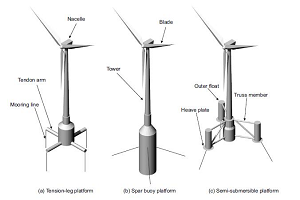Day 1 :
Keynote Forum
Marc A. Rosen
University of Ontario Institute of Technology, Canada
Keynote: Enhancing renewable energy prospects via hydrogen energy systems
Time : 10:15-10:55

Biography:
Marc A. Rosen is a Professor at the University of Ontario Institute of Technology in Oshawa, Canada, where he served as founding Dean of the Faculty of Engineering and Applied Science. Dr. Rosen was President of the Engineering Institute of Canada. He is a registered Professional Engineer in Ontario, and serves as Editor-in-Chief of several journals and Director of Oshawa Power and Utilities Corporation. With over 60 research grants and contracts and 600 publications, Dr. Rosen is an active teacher and researcher in sustainable energy, environmental impact, and energy technology (including renewable energy and efficiency improvement). Much of his research has been carried out for industry, and he has written numerous books. Dr. Rosen has worked for such organizations as Imatra Power Company in Finland, Argonne National Laboratory near Chicago, and the Institute for Hydrogen Systems near Toronto. Dr. Rosen has received numerous awards and honors.
Abstract:
The prospects for renewable energy are enhanced through the use of hydrogen energy systems in which hydrogen is an energy carrier. As easily accessible fossil fuel supplies become scarcer and environmental concerns increase, hydrogen is likely to become an increasingly important chemical energy carrier. As the world’s energy sources become less fossil fuel-based, hydrogen and electricity are expected to be the two dominant energy carriers for the provision of end-use services, in a hydrogen economy. Thus, hydrogen energy systems allow greater use of renewable energy resources. In this presentation, the role of hydrogen as an energy carrier and hydrogen energy systems, and their economics, are described and reviewed.
There are many commercial processes for producing hydrogen from fossil fuel and non-fossil fuel sources (including renewables). Technologies for the storage and distribution of hydrogen exist. Technologies are developing for utilizing hydrogen as an energy carrier, especially in transportation. The technologies needed for hydrogen energy systems are undergoing much research and development.
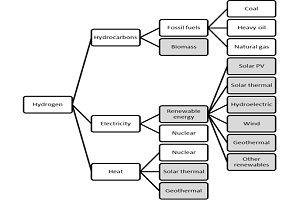
Keynote Forum
Tin-Tai Chow
City University of Hong Kong, Hong Kong SAR, China
Keynote: Building Integrated Active and Passive Solar Design
Time : 11:15-11:55

Biography:
Tin-Tai Chow received his PhD from the University of Strathclyde in Scotland. He is currently the Associated Professor and Director of the Building Energy and Environmental Technology Research Unit at the City University of Hong Kong. He has 400 academic publications, including over 130 SCI journal articles and with over 4,000 Scopus citations. His Scopus H-index reaches 35. He has been serving as members of many journal editorial boards, such as the Journal of Building Performance Simulation. He also contributes to many reputable international conferences as committee members and invited speakers. He holds fellow membership in many professional institutions, such as FASHRAE and FCIBSE
Abstract:
The interest in zero carbon building developments is increasing year by year. This makes it important to maximize the renewable power outputs and thus favors the use of hybrid generating systems. Combined active and passive solar design is an evolving science in building technology. Traditionally, building facade is one crucial element in architecture. Nowadays, it has escalating importance in services engineering owning to its significant influence on the engineering system performance and energy use. Building integrated solar devices may be installed either at the building façade or on the roof. The system can be designed as invisible, aesthetically appealing, or appearing as an architectural concept. Advances in the development of multi-functional photovoltaic/thermal (PV/T) facades may provide an important stimulus for architectural expression. On the other hand, the design of extensively-glazed building is a world-wide architectural trend. At this end, the PV ventilated glazing technology offers substantial energy saving opportunities through air conditioning load reduction, more favorable daylight penetration, and solar energy utilization. On the other hand in the liquid-flow window option, a thermosyphon-induced liquid stream flows within the cavity to the heat exchanger for feed water pre-heating. The building integrated active and passive solar designs then ask for the consideration of all building components and services systems at one shot, well at the project commencement stage. In other words, site planning, aesthetic design, system equipment and construction material selection, financing, construction, commissioning, and long term operation and maintenance have to be well coordinated. These become alternative challenges to be overcome.
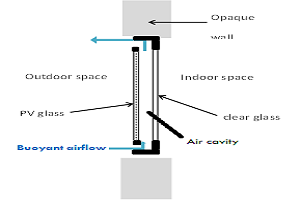
Keynote Forum
Peter Novak
Institute for High-technologies and Systems, Slovenia
Keynote: Exergy as measure of sustainability of energy system
Time : 11:55-12:35

Biography:
P. Novak was professor and Chief Laboratory for HVAC and Solar Energy all at Fac. of Mech. Eng. Ljubjana, Dean of Faculty, Dean of High School for Technologies and Systems, Novo mesto and Director of the Institute for High-technologies and Systems. Last activities in EEA, Past Vice-chairman of Scientific Committee at European Environmental Agency, Copenhagen, 20012-2016 Scientific Activities: Heat and mass transfer in buildings and building equipment, solar energy, environment and climate change. For his activities become: Honorary Member of IIR, 2003, Fellow and Life Member of ASHRAE 1999; Honorary Member of REHVA, SITHOK and SLOSE. Publications and Mentorships: Author and co-author of more than 430, scientific papers, studies, reviews, owner of 10 patents, mentor of 20 PhD students, more than 25 Master students and more than 300 engineering students. Publication information’s are available, from 1980 on www.COBISS.si, Slovenian cooperative online bibliographic system under No. 00956.
Abstract:
Do we need energy or exergy? Amount of exergy in energy carriers is very different and prices include value of quantity and not the quality of energy. Exergy is measure for quality of energy, because the only part of energy available to do work is exergy. For different purposes we need energy with different amount of exergy: for heating and cooling energy mixture between small amount of the exergy and large part anergy is needed. Transition to sustainable energy system, without GHG emissions, based on RE, open the questions how to evaluate exergy from solar energy. Solar energy in all form (irradiation, water flows, wind, and biomass) consists from nearly 100% of exergy. Solar energy is for free, conversion systems are not. To exploit at maximum the present infrastructure there is common agreement that we need sustainable energy system with four main energy carriers: electricity, gaseous, liquid and solid fuels.
Our vision is the new Sustainable Energy System (SES) based on the biomass carbon recycling using solar and planetary energy for electricity and hydrogen production. SES is based on the existing infrastructure and known chemical processes. With regards to availability of renewable energy resources (RES) it is unrestricted in comparison to present fossil fuels use. The proposed SES consists of the three main energy carriers: electricity, synthetic methane (CH4) and synthetic methanol (CH3OH).

- Track 1: Renewable Energy and Resources | Track 2.Solar Energy | Track 6: Wind Energy
Session Introduction
Seungbae Lee
Inha University, South Korea
Title: Noise characteristics of small horizontal wind turbine
Time : 12:40-13:10

Biography:
Seungbae Lee has received his undergraduate BS degree and graduate MS degree in Mechanical Engineering both from Seoul National University, South Korea.
He has received his PhD degree in Mechanical Engineering from University of California, Loa Angeles. His research area of interest includes wind turbine design,
modeling and analysis, aero-acoustics, turbo-machinery design, noise control and indoor air quality.
Abstract:
Whistling noise from rotating blades is one of major obstacles to wide-spread application of small wind turbine energy generation for on-grid or off-grid utilization in rural areas. These machines are frequently located close to residents and operate at relatively high rotational speeds. Depending on the Reynolds number at each section of the blade, its aerodynamic performance and noise characteristics varies significantly due to the transitions from laminar to turbulent flows. The aerodynamic performance and noise signatures of three types of blades of a 500W, 1.5 m diameter rotor HAWT were evaluated. ANSYS CFD code and in-house code solving Ffowcs Williams-Hawking (FW-H) equations based on permeable surface are used in this research. The flow simulation is conducted solving the three-dimensional, unsteady, Reynolds-averaged Navier- Stokes equations with a shear-stress transport turbulence model. Based on the time histories of surface pressures and velocity fluctuations by the CFD calculation, the far-field, aero-acoustic propagation is calculated by solving the FW-H equations. The aerodynamic performance and acoustic characteristics for three sets of blades with different chord length and twist angle distributions were simulated and compared in this research. The blade #2 and #3 models showed the similar power performances with the power coefficient of 0.39 while the degraded performance was observed for the blade model #1 model with power coefficient of 0.34. The overall sound pressure levels at the specific observer locations were calculated as 46.36 dB, 46.55 dB and 51.46 dB for blade model #1, #2 and #3, respectively. The current study explained the aero-acoustic performance changes in terms of the rotor blade Reynolds number distributions. The computation of aerodynamics and aero-acoustics for the small wind turbine showed good agreement with experimental data.
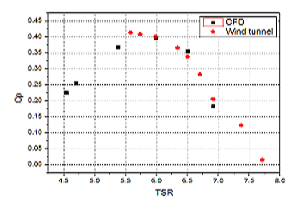
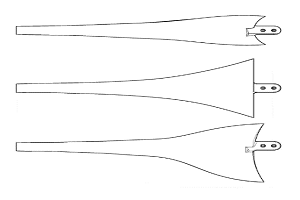
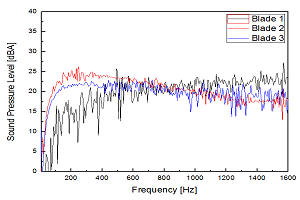
Joop van Deelen
Solliance Solar Research, Netherlands
Title: Research and business cases for thin film solar cells: benefit of thinner, cheaper layers and tandem cells
Time : 14:00-14:30

Biography:
Joop van Deelen is senior scientist at TNO with 20 years of R&D experience and over 60 publications. He has covered a broad range of thin film PV related topics including deposition technologies, optics, front contacts, R&D strategy and business case development. In addition to his R&D activities, he consults companies on technical and strategic level in various parts of the world.
Abstract:
R&D has had a major impact in the rise of renewable energy. In addition to basic research, dedicated development enables the increase of the energy conversion efficiency. However, in the competitive market economy, companies have to make strategic choices about the viability of innovation directions. For this reason scientific, technical and economic aspects need to be combined to make smart choices in innovation. We present several innovation routes in which Solliance has activities: improved transparent contacts, reduction of CIGS layer thickness, cheap absorber layers and tandem cells. Each innovation route has its specific advantages, but is connected to equally specific requirements to the layers surrounding the absorber, which need to be addressed. The efficiency increase and the cost associated with the technological solutions result in a balance, which is the net advantage. For instance, thinning of the CIGS layer brings a significant cost reduction [1,2]. However, light management technology [3] and enhanced surface passivation is needed to keep the efficiency as high as possible. This leads to a range of innovation scenarios including various device designs and material choices, which will be detailed, from which the best choice becomes apparent. A vital element is the interdependence of all these factors. For different absorber layer thicknesses, different preferred adjacent technologies emerge for passivation and light management. For improved transparent contacts, we have modeled and demonstrated the benefit by adding metallic grids on the TCO, as shown in figure 1 [4-6]. Here we also discuss the technical challenges, the economic perspective and the trade-offs involved. One of the spearheads of modern thin film PV research is the development of perovskite solar cells. It gives the promise of cheap and abundant source materials and low-cost coating technologies to make devices. However, in addition to the limited life time, we should clearly envision the impact of such a new material and the impact on the cost structure. In addition, the promise of very high efficiency in the case of large area tandem cells can be regarded as a mid- to long-term strategy and also here the technical and economic pros and cons are reviewed.

Dharmalingam Sangeetha
Anna University, India
Title: Basic ionic liquid grafted SBA-15/quaternized polysulfone composite membrane for alkaline fuel cell
Time : 14:30-15:00

Biography:
Dharmalingam Sangeetha has been working as an Assistant Professor at Anna University since 2004. She has published more than 131 papers in reputed journals and has contributed more than 196 papers in national and international conferences. She has filed seven patents in the fields of fuel cell activities. She was selected as one of the top 50 innovators of India by the DST Lockheed Innovation Growth Program 2012. She was also chosen as one of the top 10 finalists as the best Chemistry Teacher by the Tata Chemicals 2012.
Abstract:
Recently, increased attention is being paid to alkaline fuel cells employing anion exchange membrane (AEM) electrolyte as an alternative to proton exchange membrane fuel cell (PEMFC). AEM is the heart of the Anion Exchange Membrane Fuel Cell (AEMFC), the vital functions of which include; preventing the mixing of fuel and oxidant, increasing the reaction rates at both the electrodes and permitting ions (OH-) to migrate from the cathode to anode (the hydroxyl ion flow direction is opposite to the flow of protons in PEMFC). As a result, AEMFC has many advantages over PEMFC, such as remarkable electrode reaction kinetics, the use of non-Pt catalysts like Ag, Fe, Co and Ni, reduced fuel cross over and easier water management. In recent times, organic-inorganic hybrid membranes have been developed by combining the beneficial properties of organic and inorganic materials by incorporating inorganic filler components into polymer base matrix. Such hybrid membranes possess improved physicochemical and thermo-mechanical properties. In the present study, a novel hybrid membrane was synthesized based on ionic liquid grafted mesoporous silica. In brief 1-Methyl-3-(3-trimethoxysilylpropyl) imidazolium chloride, an imidazolium based ionic liquid was synthesized and chemically grafted onto the synthesized mesoporous silica (SBA-15), resulting in a mesoporous solid (IL-SBA-15) with ion-exchange properties. The prepared IL- SBA-15 was characterized by FTIR, solid state CP/MAS 13C NMR, solid state CP/MAS 29Si NMR, BET, XRD and TEM. Composite membranes with high ion exchange capacity (IEC) were then prepared by incorporating IL-SBA-15 into the quaternary polysulfone (QPSU) in different weight percentages (1, 2, 3 and 4%). The morphology and crystalline nature of the membranes were analyzed by SEM and XRD respectively. The membrane properties such as water uptake, IEC and hydroxyl conductivity were studied for its suitability in AEMFC. The prepared membranes were tested in an in-house built AEMFC of 25 cm2 electrode area with platinum anode (0.25 mg/cm2) and silver cathode (0.375 mg/cm2). Among the various membranes tested, 3wt% IL-SBA-15 containing composite membrane showed a maximum power density of 278 mW/cm2 at 60ºC. The results suggest that these composite membranes have a promising potential to be used as an electrolyte in future AEMFCs.

Adel Younis
Australian College of Kuwait, Kuwait
Title: Improved optimization search tool for self-regulating smart distribution system with wind energy integration
Time : 15:00-15:30

Biography:
Dr. Adel Younis, PhD, P.Eng., a faculty member and professional engineer and researcher in the province of British Columbia, Canada and former research
associate at both University of Victoria (UVic) and Simon Fraser University (SFU) in Canada. Dr. Younis has worked as a professional and lead project engineer in
oil and gas; renewable energy, hydroelectric; and mechanical sectors around the world. He has been teaching mechanical and materials engineering courses at
UVic, SFU and currently at Australian College of Kuwait (ACK). Dr. Younis’ areas of interest are engineering design, optimization of complex mechanical systems,
and renewable energy. He has published many research papers pertaining to mechanical, optimization and renewable energy. He has more than 18 years of work,
research and teaching experience in mechanical, materials and structural engineering areas.
Abstract:
As an integral part of a smart grid, the smart distribution system is an important concept that employs advanced communication, control and information technologies to manage and optimize the resources of a feeder in order to improve energy efficiency and customer power consumption patterns, increase penetration and storage of Renewable Energy(RE) thereby decreasing GHG emissions and enable markets, consumer motivation and participation. For electrical distribution systems and demand-side management, demand response (DR) control is an emerging concept to manage customer power consumption patterns in response to system operation conditions and to minimize (or provide) system ancillary services while maintaining customer-side comfortable usage requirements. Reliable bidirectional smart grid communications and customer’s grid-friendly participation provide new opportunities that enable DR to be employed to optimize grid operation utilizing the energy storage capability of modern homes via control of heat pumps and in the near future, plug-in electric vehicles (PEVs). Considering the complex interactions between an electrical distribution network and grid resources, in a quasi-steadystate simulation environment, optimal operation and management requires robust global optimization techniques that also incorporate distribution load flow simulations to optimally integrate RE generation, loads and corresponding DR control strategy. System power loss reduction was selected as an objective for the optimal distribution load flow optimization and the optimization process simulates load calculations and demand-side DR resource control. Residential heat pumps with thermal energy storage were chosen as typical DR resources to help regulate system power balance. An advanced recently improved metamodel-based global optimization (MBGO) search tool, named Approximated Promising Region Identifier (APRI) algorithm, was applied to determine minimum system power losses and optimal DR resources operation to offset wind fluctuations. This MBGO tool solves complex global design optimization problems with black-box objective/constraint functions and is ideally suited to this complex, computationally intensive application. The optimal control solution was compared with the un-optimized results to show the benefit of the proposed advanced optimizer. The inability to achieve an optimized solution and the poor computational efficiency of conventional optimization approaches in identifying the correct global optimum are also illustrated. The novel optimization method prospects the whole design space by generating sample points, reporting evaluating information using a surrogate model and then focusing the search in the most promising region by deploying more agents. Using the integration of these adaptive tools and methods, the optimization results are considerably promising in terms of computational efficiency and performance enhancement of the turbomachinery blade airfoil shape in
both design and off-design conditions.
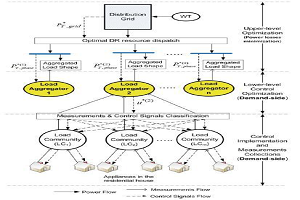
Ali Fahrettin Kuyuk
University of British Columbia, Canada
Title: Heat transfer analysis of single and multiple geothermal heat extraction boreholes, Numerical versus analytical comparison
Time : 15:30-15:50

Biography:
Ali Fahrettin Kuyuk is an Assistant Professor at Norman B Keevil Mining Engineering Institute of The University of British Columbia, Vancouver, Canada. Prior to joining UBC, he did his PhD and Post-doctoral studies at McGill University. His research includes the study of various mechanical and energy systems with a specific emphasis on mining and petroleum industries. His research team focuses on developing novel solutions for maximizing energy efficiency, improving system performance, preventing waste of energy, and replacing fossil fuels with renewable energies.
Abstract:
Numerical appreciation of any heat extraction scenario can be reliable yet it may cost escalated computational times due to the complex nature of three-dimensional gridding. Accordingly, simplified one-dimensional analytic solutions of such problems could ease this requirement. In the light of this, heat transfer responses of three discrete installation scenarios of cylindrical heat extraction boreholes are studied analytically and discussed in this present study. Each scenario is modeled in a computer aided environment aiming to validate driven analytic solutions. Contemporary unsteady state, time dependent heat transfer equations are modified and related governing differential equations are introduced to Wolfram’s Mathematica. Gathered analytic responses from these scenarios on specified boundary conditions are then contrasted with their corresponding numerical representations, modeled in ANSYS, Fluent. It is shown that, 1-D analytic representation of such cylindrical heat extraction scenarios yield sufficiently approximate results in comparison to their complex numerical equivalents, while understanding time dependent energy extraction rates and source depletion. Consequently, findings of this study demonstrate that similar heat flux results can be obtained with faster computational times in heat transfer modeling of cylindrical heat extraction boreholes.

Mina Bahrami Gholami
University of Auckland Energy Center, New Zealand
Title: Potential solar and wind power expansion in the New Zealand Network
Time : 16:15-16:35

Biography:
Mina Bahrami Gholami is a PhD candidate of economics at the University of Auckland. With knowledge on both econometric and mathematical methods, she is passionate about environmental issues including topics on mitigating emissions and renewable energies. She has nearly completed her doctoral research on evaluating the opportunities for solar PV generation, and the impacts of large solar and wind power on the New Zealand electricity market. Applying agent based model, using the solver SWEM that is developed by the Energy Center, she simulates power market to answer the open questions about the effects of intermittent power extension on nodal and national prices. Her background goes back to environmental economics. For her Master’s thesis, she conducted a comparative study on greenhouse gas emissions in OECD and OPEC countries using econometric approach, panel data.
Abstract:
Renewable generation, solar and wind, has constantly increased over the last decades. Increasing the share of renewable generation, it is well known that power price is likely to reduce in short-run due to the merit order effect. In long term, the effect also depends on changes in new capacity investments. Previous studies examine the effect of intermittent energies in different electricity markets. For a hydro-based system such as New Zealand, increasing the share of variable resources is more important as the main supply is changeable and depends on climatic conditions. Wind power expansion for this network is well studied by Browne et al. (2015); however, they do not consider solar power in their model. New Zealand seems to be reach enough to access adequate sun radiation for the purpose of power generation, particularly in the North Island. Therefore, the contribution of this study is introducing large solar power into the system. We extend the literature by simulating the power market, using an agent-based model, in order to answer the question of whether wind extension is the best solution in terms of the impacts on electricity price and dispatch or the solar aggregated wind power scenarios would better fits the existing network. We investigate this issue for the case of New Zealand as a small and pure hydro-based network yet the methodology is applicable for other power networks as well.
Yousif M. Makeen
University of Malaya, Malaysia
Title: Hydrocarbon source potential of Tertiary carbonaceous shale, shale and siltstone of eastern Chenor, Penyu basins, Pahang, Malaysia
Time : 16:35-16:55

Biography:
Yousif M Makeen has completed his BSc degree in Applied Geology from University of Malaya, Malaysia in 2011. His MSc was converted to PhD by the University Senate based on his excellent performance. His professional career began in 2015, when he received his PhD from University of Malaya. His research interests are in oil, source rock characterization and petroleum systems modeling. He has published 20 papers in ISI journals and conducted many consultation projects for major oil companies. He is currently a Post-doctoral Research Fellow at the University of Malaya.
Abstract:
Malaysia and Asian region have a number of petroleum-bearing sedimentary basins commonly associated with coal and carbonaceous shale strata. Shales are the common source rocks of conventional petroleum resources whilst coal although a source for conventional liquid hydrocarbons, are more widespread as unconventional resources, such as cannel coal and coal bed methane (CBM). Coals within the oil and gas producing provinces of Malaysia and SE Asian region in general are known to be oil-prone. However, with the inevitable decline in conventional petroleum, remaining hydrocarbons will be more difficult to find and more expensive to develop. Set against the backdrop of world energy consumption projected to increase 49% by 2035, alternative sources of energy are being sought. Petroleum geoscientists are exploring unconventional source/reservoir systemssuch as the carbonaceous shale, oil shale, tight sand, coal bed methane and fractured basement. In this study, shale and siltstone which are an importance sedimentary facies for hydrocarbon exploration in the eastern Chenor, Pahang have been investigated using organic geochemical and petrological methods as well as Micro-CT, SEM (Scanning Electron Microscope). The tertiary sediments of eastern Chenor show a general trend of low thermal maturity based on vitrinite reflectance measurements (<0.5% Ro) and Tmax (<435 oC). Organic petrological studies revealed that analyzed carbonaceous shale and shales are rich in liptinite macerals (>20 vol.%) such as aliginite (Botryococcus algae), sporinite, cutinite and amorphous organic matter indicating oilprone Type-I and Type-II kerogens. Pyrolysis data also show a trend from predominant oil-prone Type-I and II kerogens to mixed oil and gas-prone Type II-III kerogens within the studied samples except for the siltstones samples which have low HI value indicating no potential for hydrocarbon generation. The EOM result shows that all the carbonaceous shale samples possess excellent values for the bitumen/EOM and hydrocarbon (HC) content. The studied shale samples have very good petroleum potential. However, analyzed siltstones show poor to fair petroleum potential based on for the bitumen/EOM and hydrocarbon (HC) content. This is supported by plots of TOC content versus extractable organic matter (EOM) and hydrocarbon yields versus TOC content commonly used in estimating the hydrocarbon generative potential of the source rocks.
Rafael Perez-Pena
New Mexico State University, USA
Title: Energy demand determinants in Mexican households, 2008-2014
Time : 16:55-17:15

Biography:
Rafael Perez is a doctoral candidate in economic development at the Economics, Applied Statistics & International Business Department (EAS&IB) of New Mexico State University (NMSU). His research interests are energy economics, agricultural and resource economics, economic development, international economics and macroeconomics. Mr. Perez is a young researcher from the US-Mexico border region so he is particularly passionate about the US and Latin-American economic relations. Mr. Perez has collaborated in energy-related projects for the United States Department of Agriculture, the United Nations, and academic institutions in the US, Mexico, and Brazil. Benjamin Widner is a faculty member at the EAS&IB of NMSU. Dr. Widner obtained his Ph.D.at Colorado State University. His research interests are urban/regional economics, public finance, microeconomics, development, econometrics, managerial economics, environmental economics, macroeconomics.
Abstract:
Statement of the Problem: Substitutability and complementarity between different energy sources and energy access are relevant factors explaining the household energy demand in developing countries. Previous researchers analyse the relationship between different energy sources and the Mexican government as well as international agencies compute energy access indicators and based on these results establish energy policies and goals. Mexico has the highest ranking in energy access terms as pointed out by the World Bank (WB) and the International Energy Agency (IEA). The main purpose of this paper is to analyze the relationship between the demand for energy and the energy price, energy access, household income, education of the household head, and size of the localities of Mexican households from 2008 to 2014. Methodology & Theoretical Orientation: This research uses an econometric model, computes an average energy price variable and an alternative energy access variable. The average energy price is used to test for complementarity and substitutability between energy sources (coal and fuel wood and natural gas, LPG, and electricity). The energy access indicator serves as an alternative measure to those conducted by the WB and the IEA and can be used to examine feasibility of international goals and national energy policies.Preliminary results suggest that modern energy sources (natural gas, LPG, and electricity) are substitutive goods between each other but they are complementary goods to traditional energy (coal and fuel wood). In addition, energy access is one of the most significant determinants of energy demand in Mexican households. Energy access impact varies when alternative energy access indicators are used. Recommendations: energy access indicators in Mexico should be revised for different energy sources. Renewable energy can contribute to improve energy access in Mexican households.
Abdulbaset Saad
University of Victoria, Canada
Title: Kriging-Bat design optimization algorithm for floating offshore wind turbine support structures
Time : 17:15-17:35

Biography:
Abdulbaset Saad is a PhD candidate in the mechanical engineering department at the University of Victoria, British Columbia in Canada. He is working on
developing global optimization algorithms for complex engineering problems. He has developed new optimization methods and used them in solving renewable
energy engineering problems.
Abstract:
This paper presents a modified Bat design optimization approach based Kriging meta-model for determining the optimum design parameters for floating wind turbines that includes a design space spanning three stability classes of floating wind turbine support structures. In order to optimize such complex system, efficient and robust design optimization algorithm named, Kriging-Bat design optimization algorithm, where Kriging meta-model is introduced to Bat algorithm and used to search the design space for optimal designs has recently been developed for such problem. In order to provide a relatively complete exploration of the design space, a single design parameterization scheme was used to define the geometries of tension-leg, spar buoy and semi-submersible candidate designs. Evaluation of the newly proposed algorithm was carried out by comparing the obtained results that is minimizing the cost of floating wind turbines against other optimization algorithm such as Differential Evolution (DE). Optimization results for the single-body platforms indicated a dominance of tension-leg platforms in this subset of the design space. Results for multi-body platforms showed that semi-submersible platforms with four oats are more stable and cost effective than other semi-submersible designs. In general, the full exploration of the design space demonstrated that four oat semi-submersible platforms with angled taut mooring systems are a promising concept that can be used as a foundation for a detailed design process. This optimization approach has been proved to be efficient and robust in solving complex renewable energy applications and therefore suggests a promising avenue to pursue in more details.
